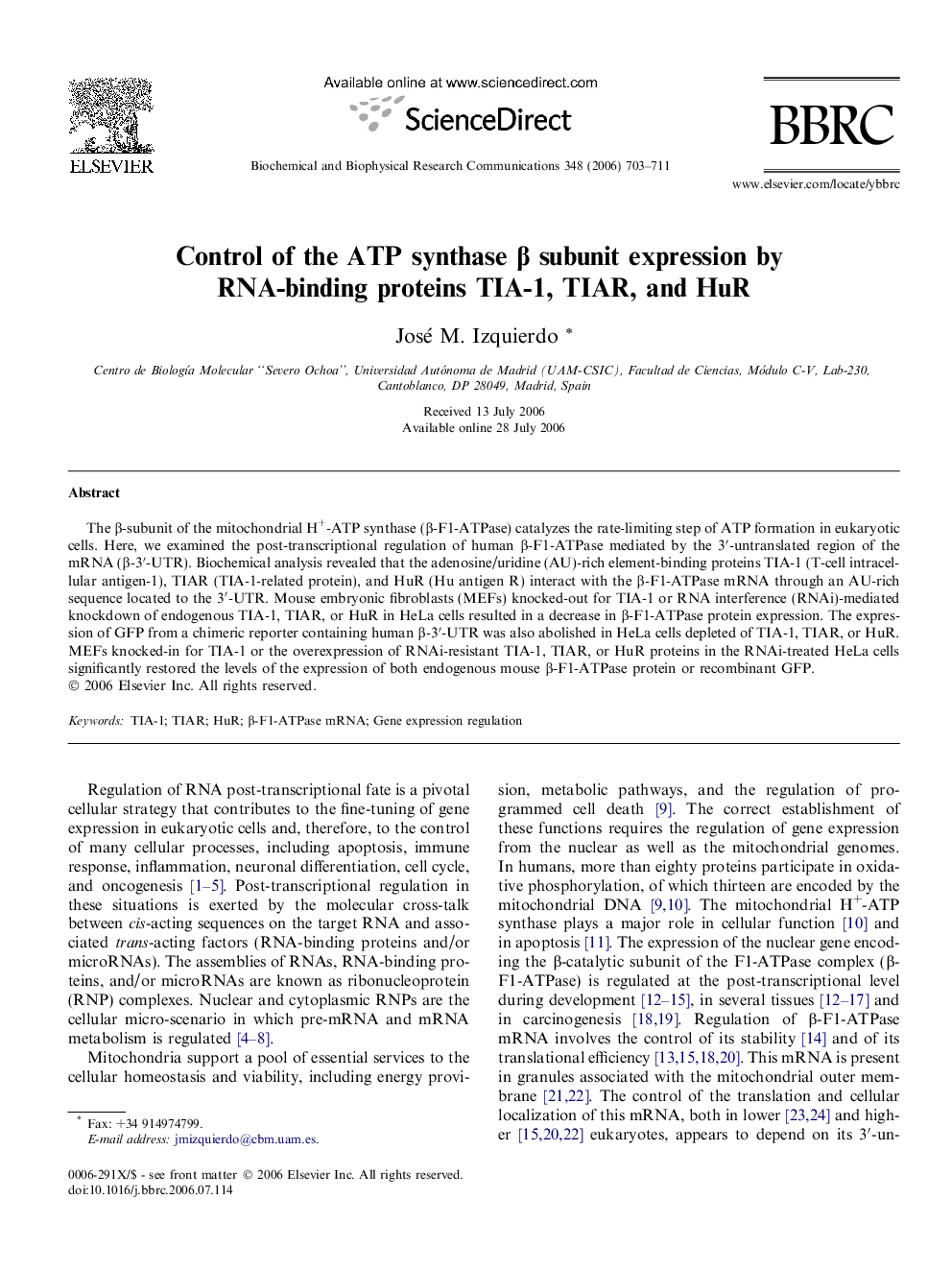| Article ID | Journal | Published Year | Pages | File Type |
|---|---|---|---|---|
| 1939661 | Biochemical and Biophysical Research Communications | 2006 | 9 Pages |
The β-subunit of the mitochondrial H+-ATP synthase (β-F1-ATPase) catalyzes the rate-limiting step of ATP formation in eukaryotic cells. Here, we examined the post-transcriptional regulation of human β-F1-ATPase mediated by the 3′-untranslated region of the mRNA (β-3′-UTR). Biochemical analysis revealed that the adenosine/uridine (AU)-rich element-binding proteins TIA-1 (T-cell intracellular antigen-1), TIAR (TIA-1-related protein), and HuR (Hu antigen R) interact with the β-F1-ATPase mRNA through an AU-rich sequence located to the 3′-UTR. Mouse embryonic fibroblasts (MEFs) knocked-out for TIA-1 or RNA interference (RNAi)-mediated knockdown of endogenous TIA-1, TIAR, or HuR in HeLa cells resulted in a decrease in β-F1-ATPase protein expression. The expression of GFP from a chimeric reporter containing human β-3′-UTR was also abolished in HeLa cells depleted of TIA-1, TIAR, or HuR. MEFs knocked-in for TIA-1 or the overexpression of RNAi-resistant TIA-1, TIAR, or HuR proteins in the RNAi-treated HeLa cells significantly restored the levels of the expression of both endogenous mouse β-F1-ATPase protein or recombinant GFP.
